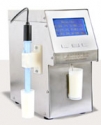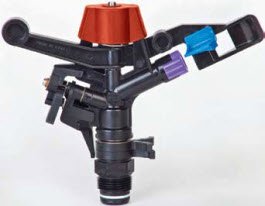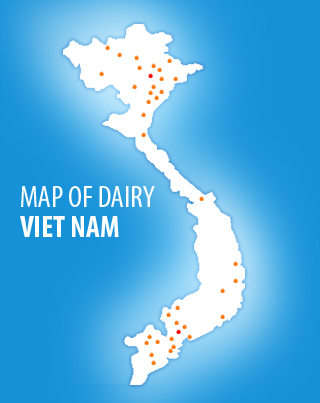Dairy in the World
How Fast Can You Milk A Cow? A New Genetic Tool Measures Milking Speed
Dairy producers looking to maximize parlor efficiency will soon have a new genetic tool to add to their toolbox. The Council on Dairy Cattle Breeding (CDCB) is set to release a long-anticipated milking speed genetic evaluation in the August 2025 proof run, marking a major milestone in performance trait development.
Milking speed, defined as pounds of milk per minute, has become a rising topic of interest across the U.S., particularly in high-throughput parlors and robotic systems in the West and Southwest. But until now, it lacked a reliable, standardized genetic evaluation tailored to the U.S. dairy population.
“Milking speed is an exciting topic that we continue to hear more and more about,” says Asha Miles, director of Dairy Records Management Systems and chair of the Milking Speed Evaluation Task Force for CDCB. “We continue to hear measures of farm and parlor efficiency in terms of milk per stall or seconds per turn. This evaluation offers a powerful tool to address that.”
What Is MSPD?
The new Milking Speed PTA (MSPD) represents the average pounds of milk per minute an animal’s offspring is expected to produce in a conventional milking system under average management conditions. It is calculated using sensor data collected from inline meters installed in traditional parlors across the U.S., making it the first U.S.-based, objective evaluation for milking speed.
“We’ve defined milking speed as the total pounds of milk in an individual milking, divided by the total milking duration in minutes for that milking,” Miles explains. “That combination gives us a more meaningful measure than milking duration alone, which doesn’t account for how much milk the cow actually produces.”
By using this ratio, pounds per minute instead of a raw duration, CDCB provides a more accurate measure of efficiency. For example, a cow that takes 8 minutes to milk might not be slow if she yields significantly more milk than average. Milking duration without yield context, therefore, is not an effective selection trait on its own.
From Subjective to Sensor-Driven
While countries like Canada and Switzerland have had milking speed evaluations in place for years, those systems rely on subjective scores, often assigned by trained classifiers during type evaluations. But the CDCB Task Force determined early in the process that this approach was not feasible or desirable in the U.S.
“The United States has much larger herds on average than most European countries,” Miles says. “So, a system that requires a classifier to individually score cows on milking speed would be too labor intensive. And beyond that, it introduces user bias. Different classifiers may score the same cow differently, which affects reliability.”
Instead, the team opted for a data-rich, sensor-based approach that could capture consistent and scalable metrics across farms and eliminate human subjectivity.
Collecting a Massive Amount of Data
According to Miles, the research behind MSPD began in 2021, when the CDCB established a dedicated task force to investigate the feasibility of creating a genetic evaluation for milking speed. That early work revealed a massive opportunity, but also some significant challenges.
The dataset came from about 300 U.S. herds that agreed to share their parlor data for research. Through partnerships with Dairy Records Management Systems (DRMS) and support from USDA’s Animal Genomics and Improvement Laboratory, researchers were able to collect over 50 million individual milking records, each one capturing milk weights and milking durations for every milking across entire lactations.
“It was kind of incomprehensible at the time,” Miles says. “It’s the very first time we’ve ever tried to do something like this on this scale.”
But working with big data felt like drinking from a firehose, as Miles puts it. The biggest challenge was sifting through the noise.
“Sensor-based systems are designed for herd management, not for genetic research,” she explains. “So, we had to enact strict filtering protocols to eliminate inaccurate or incomplete records and identify what was truly usable.”
Factors such as milking frequency (2x, 3x, 4x), parity, breed, meter manufacturer and parlor type all had to be accounted for. Different meter manufacturers, for instance, use proprietary algorithms to determine when milk flow starts, introducing variability that had to be statistically controlled.
“Despite all that noise, the resulting trait showed incredibly high reliability,” Miles says. “We were pleasantly surprised by the strength of the heritability.”
High Heritability
The heritability of MSPD was calculated at 42%, making it the highest heritability of any of the 50 traits currently evaluated by CDCB. For comparison, milk, fat and protein yield traits are typically in the 20% range.
“That tells us this is a highly genetic trait,” Miles says. “Even with all the variables, our models are accurately identifying the genetic signal. That means producers can make swift, measurable progress if they select for it.”
The trait is also expressed in practical, easy-to-understand terms. Holstein cows currently average 7 lb. per minute, and preliminary testing showed bull predicted transmitting ability (PTAs) ranging from 6.2 lb. to 8.1 lb. per minute. Higher values mean faster-milking offspring.
What Makes MSPD Different from Other Traits
Currently, MSPD is only available for Holsteins, and only includes data from conventional parlors. Although the dataset included 70 robotic herds, data from automatic milking systems (AMS) has not yet been included due to its complexity.
“Milking frequency and interval are very consistent in conventional parlors, but in a robotic system, everything can change,” Miles says. “A cow might milk four times one day, twice the next, and she can visit at any time of day. That makes it much harder to model.”
However, Miles notes that AMS data is a key focus for future research. Interestingly, early comparisons showed robotic herds had faster average milking speeds than conventional herds, likely due to producers independently selecting for faster-milking animals.
“That was really exciting to see,” Miles says. “It suggests that producers are already aware of the value of milking speed and have been acting on it, even without a genetic evaluation.”
MSPD also differs significantly from existing milking speed traits like the MSP used in Brown Swiss and Milking Shorthorn, which rely on subjective producer reports during classification.
“It’s really important to understand how each PTA is defined and expressed,” Miles emphasizes. “If you’re using Canada’s evaluation, you’re selecting for something totally different: first-lactation daughters classified in their first six months. MSPD is based on complete lactation data in U.S. Holsteins, collected from inline sensors.”
What’s Next for MSPD?
The launch of MSPD in Holsteins is just the beginning. As more data becomes available, CDCB plans to expand the trait to additional breeds, starting with Jerseys, which use the same evaluation framework but currently lack a large enough dataset.
On the research front, AMS evaluation models are also on the horizon. And with the heritability so high, Miles believes producers will soon see results.
“We asked producers at World Dairy Expo a few years ago what they wanted from milking speed, faster cows or more uniformity, and the answers were split,” she says. “That showed us there’s broad interest, and with a genetic tool like this, the possibilities are wide open.”
A New Tool for Parlor Efficiency
According to Miles, MSPD represents a shift in how the U.S. dairy industry can think about efficiency. Not just in nutrition, reproduction or yield, but in how cows actually perform in the parlor.
“This evaluation is built from U.S. cows, using U.S. data and designed for U.S. systems,” Miles adds. “It’s the most relevant and useful tool producers have ever had for selecting on milking speed.”
With a practical, easy-to-interpret expression, high heritability and real-world application, MSPD is poised to become a key part of genetic planning for progressive dairies.






















